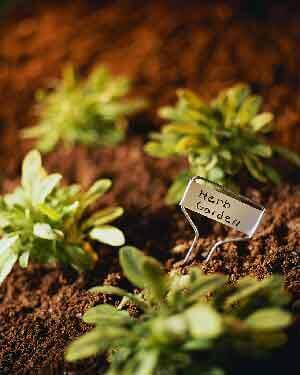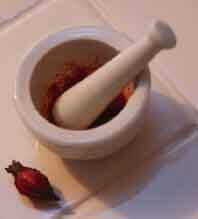Herbs and Herbal Properties
What are Herbs?
Herbs are amazing especially if you understand them and their herbal properties. According to definition, “herbs are any plant with leaves, seeds or flowers that are used for flavoring food, cooking, medicine, or perfume which do not have a woody stem and they die down to the ground after flowering or at the end of their growing season.” Sounds like they are food to me. We all know that oranges are high in Vitamin C, that is why we drink orange juice when we have a cold.

Herbs as Food
Herbs are food given to us by nature. Whole foods and herbal plants contain properties that have therapeutic or medicinal value. They have been used for centuries as remedies for certain ailments and many people are now going back to using them and foods as their medicine because of their long history of safety and efficacy. We can not forget that many of the items we refer to as herbs today, like dandelion, were once consumed as food.
Herbs and foods are whole substances that contain phytonutrients or phytochemicals, vitamins, minerals and enzymes. It is the combination of all these things that give them their nutritional value and therapeutic properties. Many studies have been done with foods and herbals showing that eating certain types can help with heart disease, diabetes, inflammation, and detoxification just to name a few of their benefits. Lets take a look at carrots for an example. Carrots are loaded with beta carotene and are known for their strong antioxidant properties. Add some herbal plants as part of any wellness routine.
Carrots contain the following: vitamins A, B1, B3, B6, C, K, and C; dietary fiber, potassium, manganese, molybdenum, phosphorous, magnesium, and folate. Herbal plants as well as foods create action within our body. They are both not used to treat anything, they are used to stimulate actions in the body making us stronger as a whole. The following is a list of some of the herbal groups and properties.
Herbal Properties and Groups
There are 3 major groups of herbal properties: Detoxifying, Regenerating, or Regulating. Different herbs create actions that affect different organs and different body systems. When this occurs, we refer to this action as the herb having an affinity for a specific organ or body system. Hawthorn for example has been known for its affinity for the heart and circulatory system. Following are some herbal groups based on their sense of taste, smell, and touch.
Aromatic and / or Pungent
They have a strong smell. When I think of aromatic types – roses, lavender, and peppermint come to mind. Aromatic plants get their aromas from volatile or essential oils. The stronger they smell, the more essential oil it contains. Pungent herbs on the other hand are closely related to aromatics yet they are thought of as hotter. Cayenne peppers, garlic and onions come to mind.
The basic actions of the aromatic and pungent types are stimulating and are used by areas that are inactive. The Aromatic and pungent ones help to relieve congestion of various kinds like mucus, blood, and lymph. They can also promote perspiration. Have you ever eaten something hot and spicy and started sweating. Generally aromatic and pungent herbs are known for getting things moving, whether it is sweating, respiratory mucus, stimulating circulation and better digestion, or eliminating gas. So the aromatic and pungent ones are said to move the energy upwards and outwards.
Bitter Herbs
These have a bitter taste, which is why most of us try to avoid them. The most commonly used bitters and food are chocolate and caffeine. The reason we avoid bitters is because bitters usually contain potent medicinal compounds. This is why our taste buds are sensitive to them, to warn the body something powerful is coming.

This video is about “12 Herbal Properties” done by Steven Horne.
Bitter herbs can be alkaloid (organic compounds that contain nitrogen) or non alkaloids. When bitter herbs are alkaloid they usually have a specific medicinal purpose, an example is caffeine which has a strong action on the nervous system. Overall bitters are detoxifying. Think about eating something bitter and how your body wants to just get rid of the taste from your mouth. Bitters tend to stimulate elimination in the body via the liver, colon and kidneys. They are similar to the aromatic pungent types, yet they tend to move the energy inwards and downward.
Salty
These have a much more subtle taste when you compare them to common table salt. Their salty taste is more associated with an herb or a food that is full of minerals, like celery, kelp, dulse, or alfalfa. Salty herbs are used to build up the bones, joints, skin, hair, and nails. They also help to move fluid in the body. Our cells run on sodium and potassium and it is potassium that our cells use to move fluids and nutrients in and out of them. The Salty ones are very nourishing to the body and help to gently build and detoxify the body. They are also very alkalizing and are some of the safest to use.
Sour Herbs
They tend to leave a sour taste in your mouth and make your mouth pucker. They are found in lemons, berries and many other fruits. Sour herbs, like bitters are very powerful and effective. Sours and foods are high in flavanoids, bioflavanoids, organic acids, and vitamin C which is used to build connective tissue in the body and helps the body cope with stress. Overall sour herbs are known for having a cooling effect on the body due to their high level of antioxidants and anti-inflammatory properties. Sours may help prevent free radical damage which is believed to be responsible for many chronic conditions and pre mature aging.
Astringent

Their taste is similar to sour. Your mouth will pucker but it will feel dry. Astringent herbs contain tannins which are very complex substances that come in many forms. Witch hazel, white oak bark, and pine bark are examples of astringent. Astringent herbs tend to make things tighter and firmer. If you have ever put witch hazel on your skin when you cut yourself, you know it makes your skin feel tighter and firmer and coats it to help stop the bleeding. So when you think of an herb that is astringent think of tightening or toning and contracting or reducing. Whether or not you are using them internally or externally.
Mucilant Herbs
When you taste them at first they taste sweet. As you hold them in your mouth they become slippery and slimey. Psyllium seeds and hulls, okra, and aloe vera are mucilant herbs. Mucilant herbs and food are also made up of polysaccharides that our bodies don’t digest which allows them to attract water and hold on to it. They are very soothing whether they are applied topically or taken internally and are known for their cooling, moistening and absorbing properties. Taken internally they are often used as bulk laxatives for soothing intestinal membranes. Used externally and applied topically they reduce swelling, promote healing and soothe irritated skin.
Sweet Herbs
They are just like salty herbs do not taste sweet like sugar. They merely have a sense of sweetness. Sweet herbs are generally moistening and nourishing and are thought of as a general tonic. Tonics are not designed to have a particular effect on something, they are designed to make the body stronger overall and help the body balance itself. Yucca, licorice root, astragalus are examples of sweet. Sweet herbs also have adaptogenic properties which helps the body handle and balance stress. Overall, sweet herbs are toning and very nutritious to the body. Remember, herbal medicine has been practiced for thousands of year through TCM (Traditional Chinese Medicine) and Ayurveda.
Reference and Written: Steven Horne, RH







